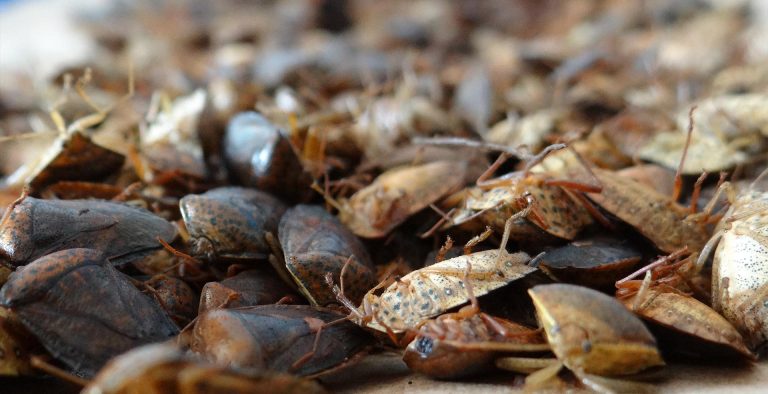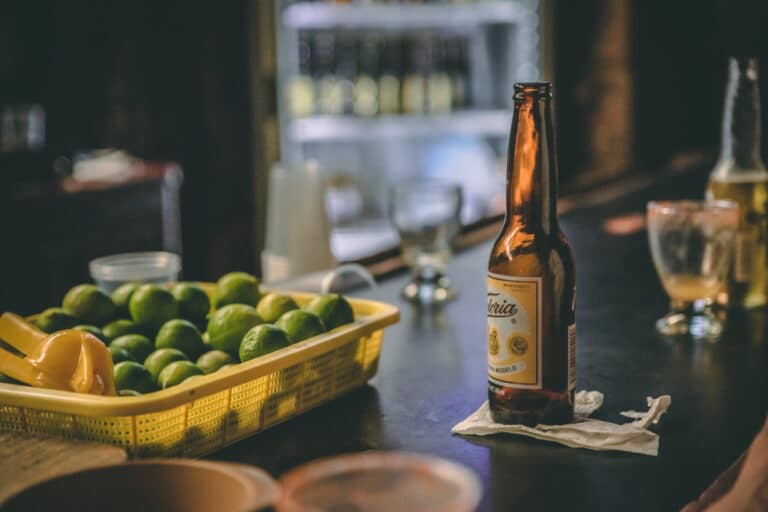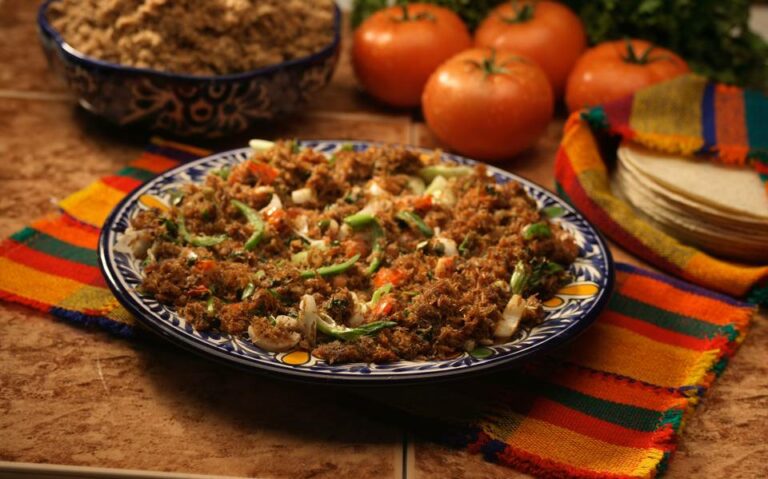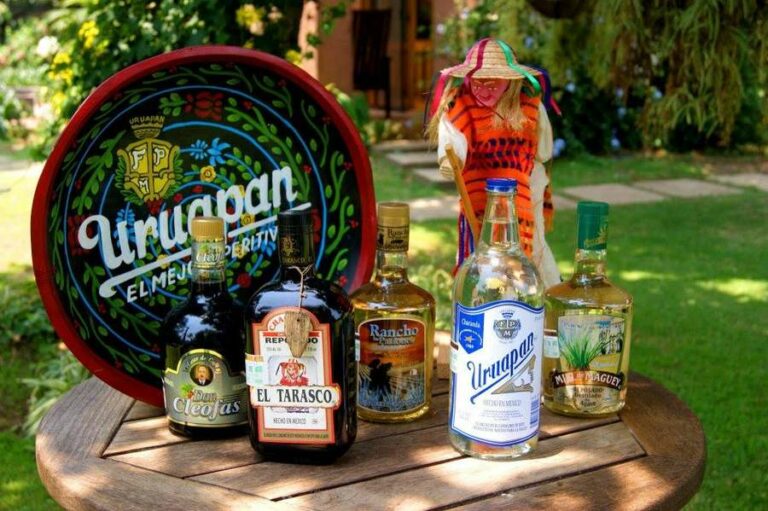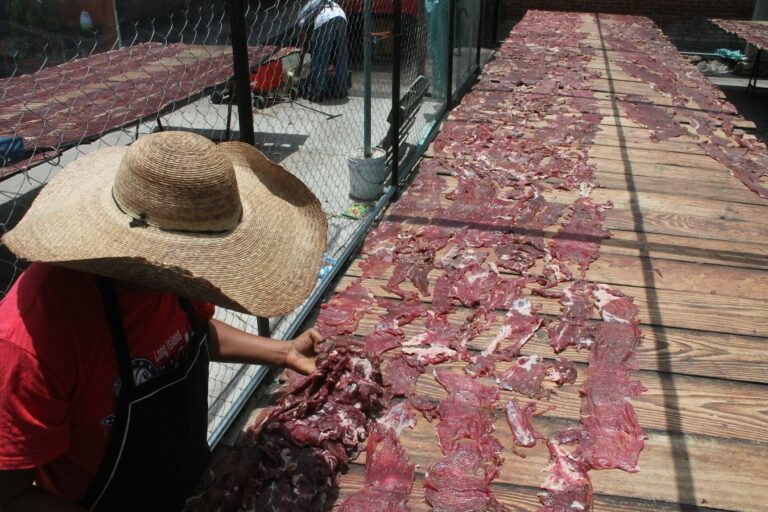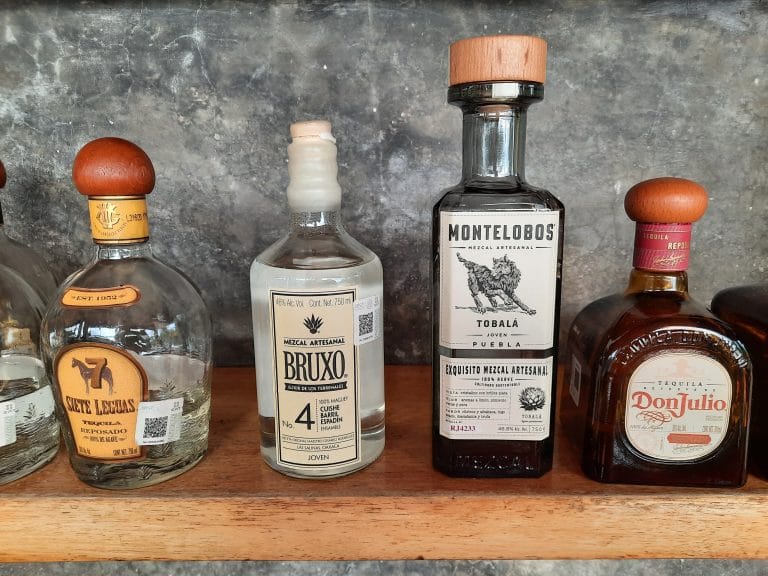Mixiotes: The Flavors of Aztec History Unwrapped
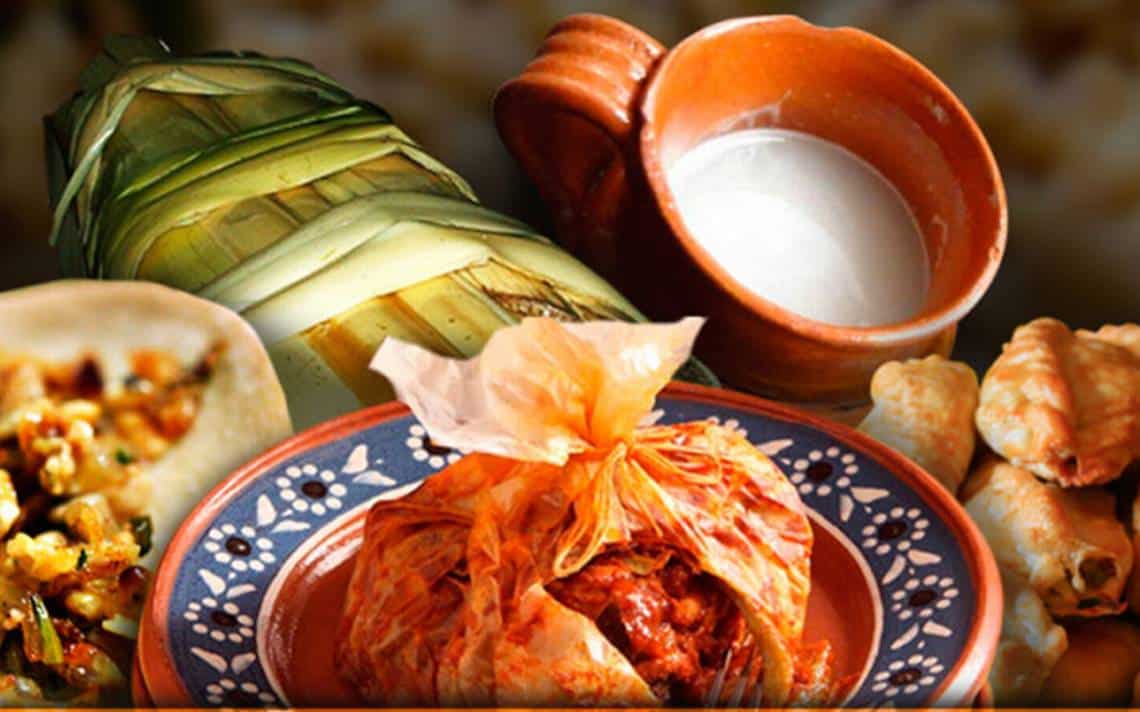
Mixiotes: The Flavors of Aztec History Unwrapped
What are Mixiotes all about? In its most basic form, this classic Mexican dish consists of marinated meat wrapped in a “membrane” from the stalk of the maguey (the pulque type). This cuticle containing the stew is called “mixiote.”
Although the origin of the mixiote is unclear, it is believed that it was created in the southern part of the Mexican plateau, in the states of Tlaxcala, Estado de México, Puebla, Hidalgo, and Querétaro.
It is in this area where the pulque maguey is grown.
Man, it took me over 20 years to discover this dish. This is how rich our gastronomy is in this country.
There are so many culinary traditions from all over that I’m sure I’m still missing out on some others.
Anyway, a good mixiote, like any good Mexican recipe, has infinite variations.
However, 3 essential ingredients cannot be missing to prepare this delicious dish. Let’s see what they are:
1. The Mixiote
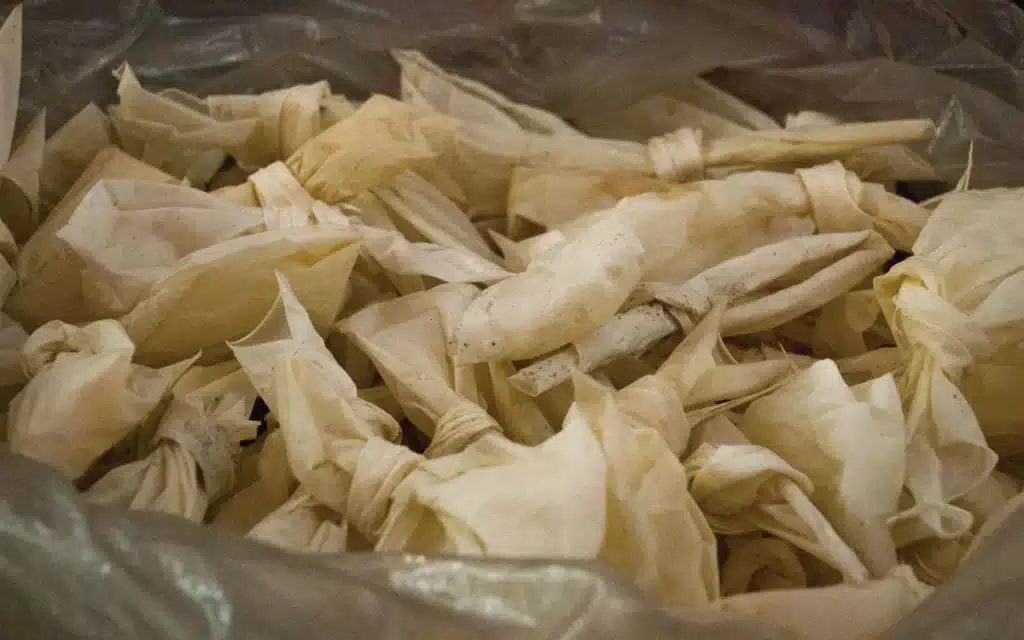
The first must be the mixiote, the agave membrane I talked about earlier with which it is wrapped.
According to several historians, the origin of its name goes back to Nahuatl, where “metl” means maguey, and “xiotl” means cuticle or stalk membrane.
This cuticle is detached from the stalk of the maguey, and in pre-Hispanic times the people used it for steaming.
Although it can be found in the market, the recommendation is not to use it since it affects the production of the agaves.
Instead, you can opt for waxed paper or aluminum foil because of its easy access and similarity to the preparation of wallpaper, with the advantage of preserving the juices of the mixiote.
2. The stew
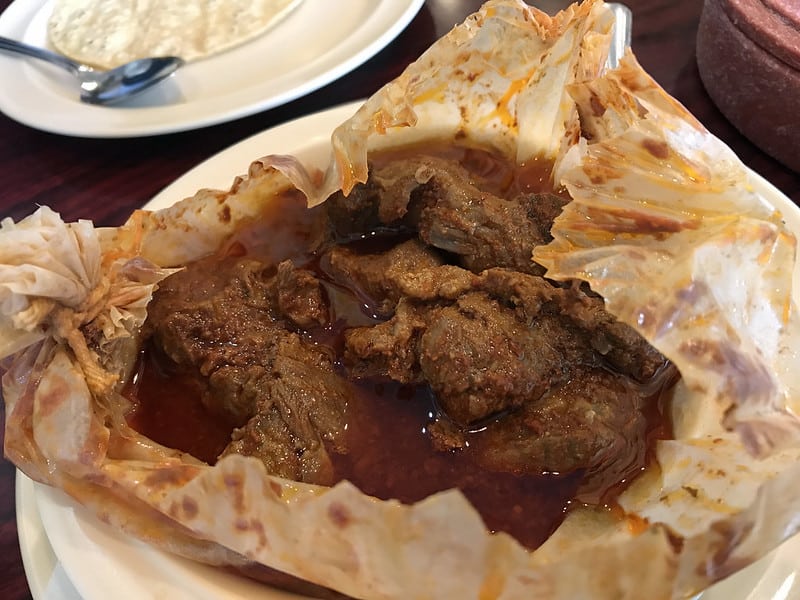
The second essential ingredient of mixiote is protein; this can vary according to the region or craving.
Typically lamb and mutton are used.
And although there are mixiotes with more exotic ingredients, made with squirrel, escamoles, wild boar, deer, and even crocodile meat, the most common ones are chicken, rabbit, pork, beef, and even fish.
3. The Mixiote seasoning
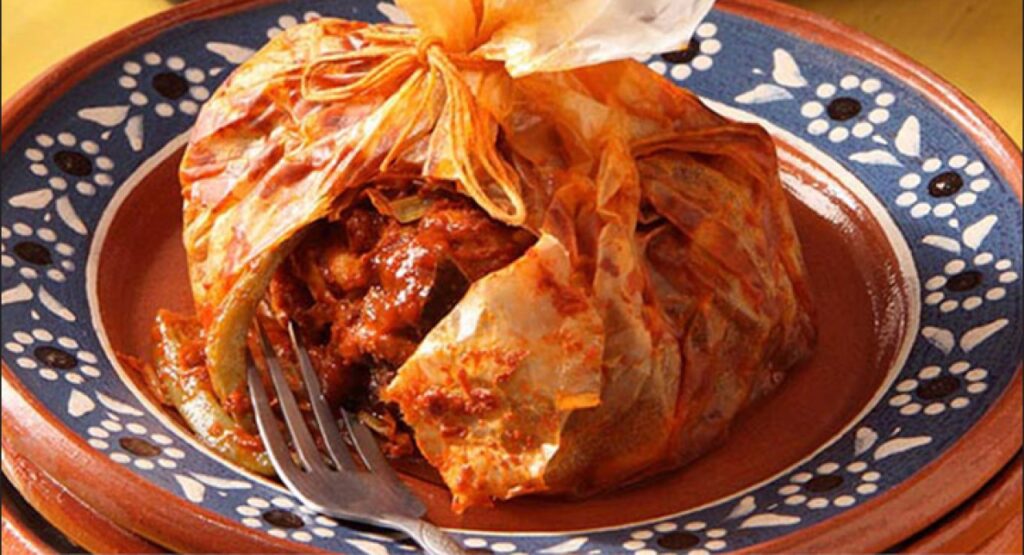
For the “adobo,” it is more complicated because, like the mole, mixiotes are full of flavor in their different alterations of chiles and seasonings.
The most popular and essential are guajillo chile, pasilla chile, morita chile, tomato, thyme, cumin, bay leaf, pepper, and onion.
Process:
- First, the meat is cooked, preferably in a pot with water, garlic, onion, and salt, until it is cooked
- When it’s done, it is divided into pieces, the bones are removed, and it is set aside to marinate
- The marinade for the mixiote can be prepared in different ways. But, by far, the most popular is to boil the chiles so that they release all their flavor; when they are ready, pass them to the blender along with the other ingredients, strain and let them rest
- To assemble the mixiote, mix the marinade with the meat and soak it in the maguey leaf, tie it at the top to avoid spilling the juices and the marinade, and steam it
- When ready to serve, it is placed on a plate and accompanied by tortillas and salsa to make tacos
Mixiotes: The Maguey’s protective coating
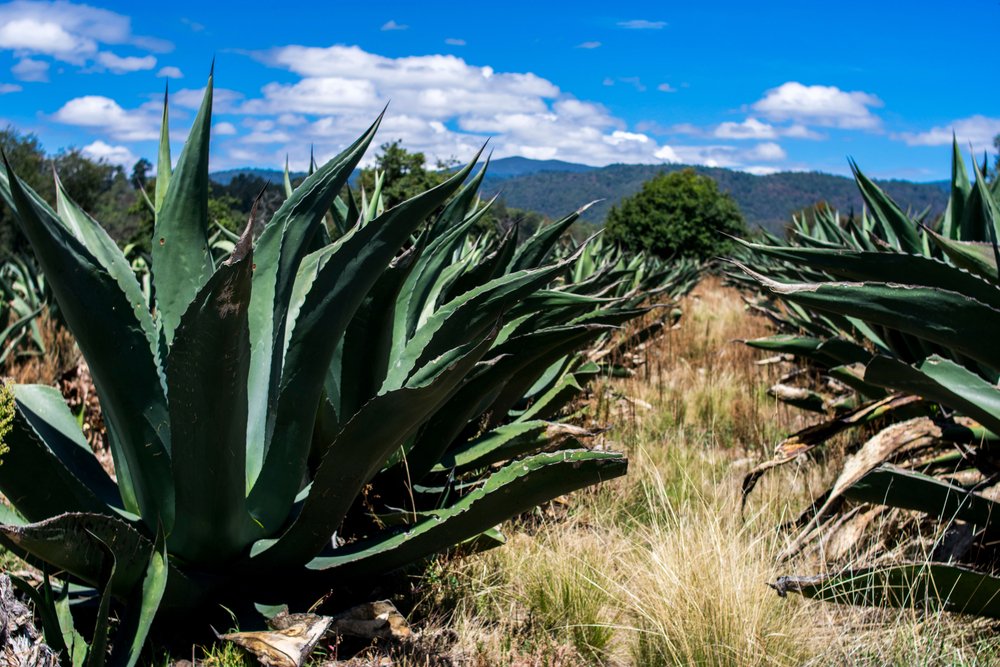
The states of Hidalgo, Puebla, and Tlaxcala have one plant in common that gives identity and is responsible for all the region’s gastronomic culture: the agave salmiana.
From this maguey, variety comes in endless derivatives, among them a transparent film that cannot be eaten but provides an incomparable aroma.
The Mesoamerican people used it by carefully removing the mixiote in each stalk and leaving it to dry.
They then rehydrated it and wrapped all kinds of enchilada meats, vegetables, and herbs.
Steaming allows the heat to do its job, and the aromas of the mixiote are transmitted to the rest of the ingredients.
In the final dish, the maguey is perceived: its herbal, earthy notes perfectly harmonize with the rest of the food.
This is the pre-Hispanic version of a French technique called empapelado or papillote, which consists of wrapping a preparation in waxed paper or aluminum foil to concentrate flavors.
Mixiotes or pulque?
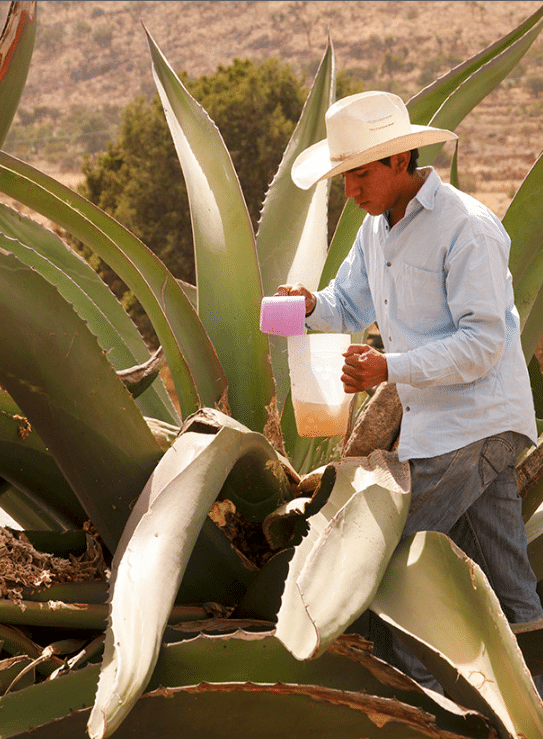
Although mixiote is a delicious ingredient, it is also a gastronomic controversy.
When it is removed, the stalks die because they cannot retain their sap or stay hydrated.
It is good to know that for maguey to make pulque. It needs to be mature enough to produce mead; at least ten years must pass in which the plant is not altered for any reason.
The fact that the stalks are uprooted for the extraction of mixiotes shortens the life of the agave salmiana and, of course, inhibits the production of mead for pulque.
For this reason, the Hidalgo state government protects the sustainable management of the maguey by employing a law.
This does not directly prohibit the commercialization of mixiote leaves –there are supermarket chains in some cities that sell it– but it does restrict it not to compromise the species.
Fair use
Contrary to what happens with acitron and other derivatives of agaves and cacti, the exploitation of magueys to obtain mixiotes can be done as long as there is a permit from the state where there is a verification to enforce sustainability actions to compensate for the damage.
Along with barbacoa tacos with broth and mezcal worms, eating mixiotes is a must in the gastronomy of Hidalgo.
Today’s traditional recipe consists of lamb meat, guajillo chile, pasilla, and pulque flavored with herbs.
The bolitas en blanco (little white rolls) are mixiote preparations with no marinade but herbs such as epazote and serrano chile.
Having fish or chicken accompanied by local nopales (cactus paddle) is very common.
To ensure you are consuming something within the margins of the law, I recommend that you do so in established places.
Have you tried Mixiotes? If so, what was your experience like? See you next time!

